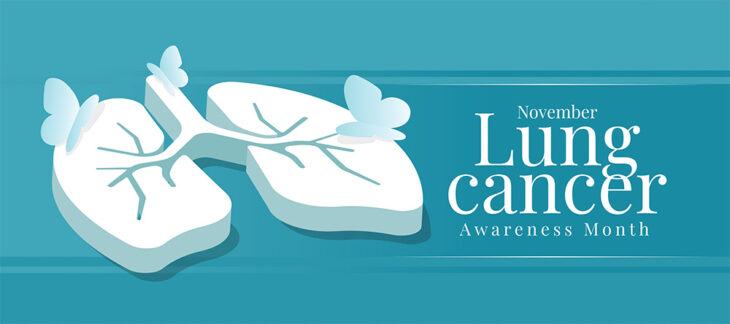Despite advances in treatment, lung cancer remains the leading cause of cancer death in the United States. However, we can make a positive difference through prevention and early detection.
The most important thing you can do to prevent lung cancer is to not start smoking or quit if you smoke already. Did you know that smoking remains the most preventable cause of all death in the United States, and not just due to cancer? Cigarette smoking causes about one in every five deaths in the United States, one in every three cancer-related deaths, and four in every five lung-cancer related deaths. If you are a smoker and ready to quit, talk to your health care provider about the multiple effective options available to help you stop smoking.
Although smoking causes most lung cancers, non-smokers can develop lung cancer as well, and radon gas is thought to be the second-leading cause of lung cancer in the United States. Radon is a naturally occurring, colorless and odorless radioactive gas that comes from rocks and soil. Radon gas quickly dissipates outdoors, but it can build up in homes and buildings. One in 15 homes has high, unsafe levels of radon, and having your home tested is the only way to determine if the levels in your home are safe; this can be done professionally or with a self-test kit. The situation should be addressed quickly if your levels are found to be high.
Lung cancer usually has no symptoms in the early stages, leading to many being diagnosed when their cancer is more advanced and harder to treat. As with most cancers, detecting it in earlier stages has been shown to improve the chance of cure and overall survival. For those at high risk of lung cancer, yearly screening with a low-dose CT scan has been shown to do this. Screening is recommended for individuals who:
- have smoked 20 pack-years or more, and
- are a current smoker or have quit within the past 15 years, and
- are between 50 and 80 years old, and
- have no health issues that significantly limit life expectancy or ability or willingness to be treated if lung cancer is found.
A pack-year is calculated by multiplying the number of packs of cigarettes smoked per day by the number of years the person has smoked. For example, smoking two packs per day for 10 years is 20 pack years.
If you meet the above criteria, talk to your health care provider to schedule your screening.
PARTICIPANTS NEEDED FOR LUNG CANCER SCREENING STUDY
Memorial Health System and Science 37 are seeking qualified participants who meet the following criteria for a lung cancer screening clinical research study:
- Ages 50-80 with a 20-plus pack-year smoking history
- Have a scheduled CT chest scan
The findings from this research study, conducted by Science 37, will be used to develop a less invasive lung cancer screening process. Qualifying participants will be compensated for their time.
Visit wearememorial.com/lung-study to complete the form for consideration. Call (228) 575-1825 with questions and to learn more.



